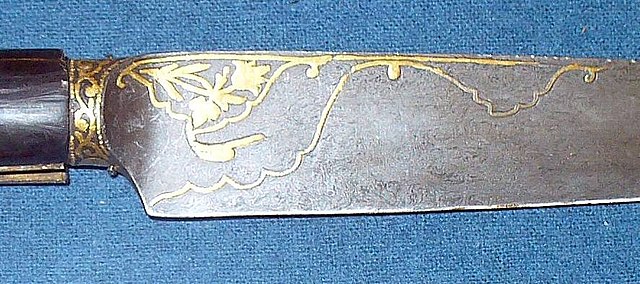Bulat is a type of steel alloy known in Russia from medieval times; it was regularly mentioned in Russian legends as the material of choice for cold steel. The name булат is a Russian transliteration of the Persian word fulad, meaning steel. This type of steel was used by the armies of nomadic peoples. Bulat steel was the main type of steel used for swords in the armies of Genghis Khan. Bulat Steel is generally agreed to be a Russian name for wootz steel, the production method of which has been lost for centuries, and the bulat steel used today makes use of a more recently developed technique.
Detail of a bulat steel knife, 19th century, Persia
Wootz steel, also known as Seric steel, is a crucible steel characterized by a pattern of bands and high carbon content. These bands are formed by sheets of microscopic carbides within a tempered martensite or pearlite matrix in higher-carbon steel, or by ferrite and pearlite banding in lower-carbon steels. It was a pioneering steel alloy developed in southern India in the mid-1st millennium BC and exported globally.
Crucible steels like wootz steel and Damascus steel exhibit unique banding patterns because of the intermixed ferrite and cementite alloys in the steel.
Detail of 17th–18th C. Indian tulwar/shamshir



